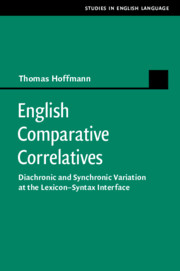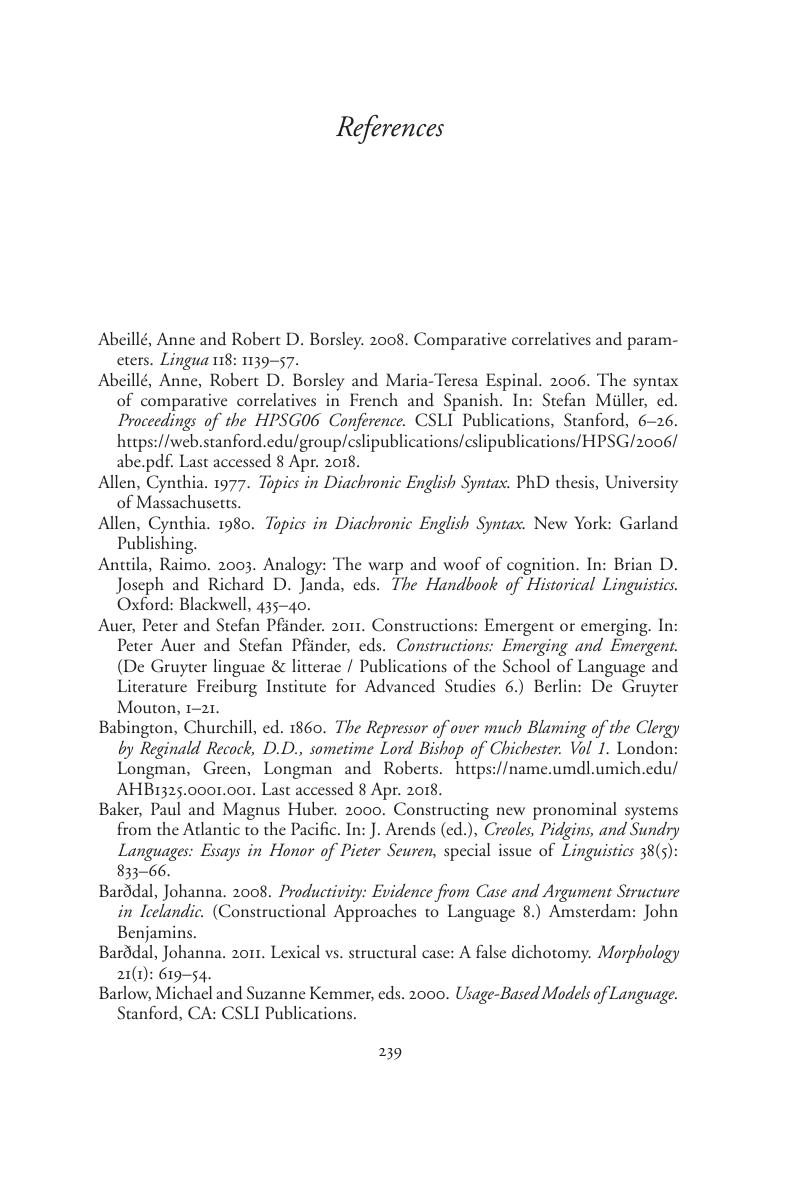 English Comparative Correlatives
English Comparative Correlatives Book contents
- English Comparative Correlatives
- Studies in English Language
- English Comparative Correlatives
- Copyright page
- Contents
- Figures
- Tables
- Acknowledgements
- Abbreviations
- Chapter 1 Introduction
- Chapter 2 Previous Research
- Chapter 3 The Diachronic Evolution of English CCs: A Constructionist Account
- Chapter 4 Synchronic Properties of the Standard British and American English CC Construction Network
- Chapter 5 A Contrastive View: German versus English Comparative Correlatives
- Chapter 6 Variation and Mental Grammars The View from World Englishes
- Chapter 7 Conclusion: The Role of Constructional Networks
- References
- Index
- References
References
Published online by Cambridge University Press: 01 May 2019
- English Comparative Correlatives
- Studies in English Language
- English Comparative Correlatives
- Copyright page
- Contents
- Figures
- Tables
- Acknowledgements
- Abbreviations
- Chapter 1 Introduction
- Chapter 2 Previous Research
- Chapter 3 The Diachronic Evolution of English CCs: A Constructionist Account
- Chapter 4 Synchronic Properties of the Standard British and American English CC Construction Network
- Chapter 5 A Contrastive View: German versus English Comparative Correlatives
- Chapter 6 Variation and Mental Grammars The View from World Englishes
- Chapter 7 Conclusion: The Role of Constructional Networks
- References
- Index
- References
Summary

- Type
- Chapter
- Information
- English Comparative CorrelativesDiachronic and Synchronic Variation at the Lexicon-Syntax Interface, pp. 239 - 256Publisher: Cambridge University PressPrint publication year: 2019


